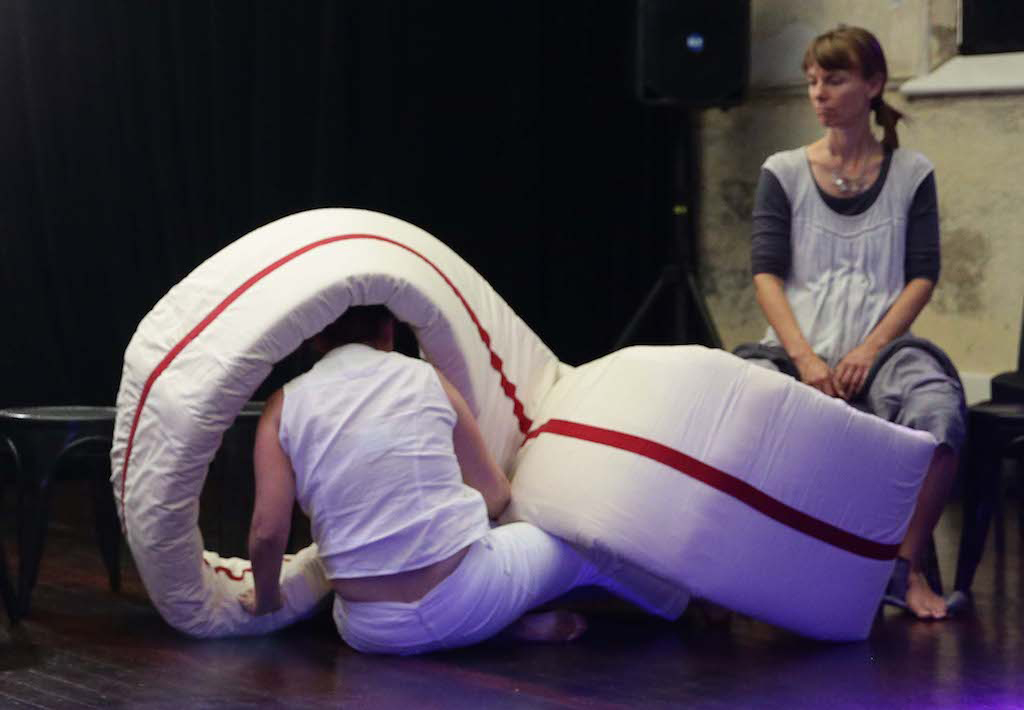
I contend that Merleau-Ponty’s conception of the intertwining body-world chiasm has resonances with artists’ experiences of artistic creativity. For example, Picasso describes the ebb and flow of the creative process in terms of how it moves between the world and his body as follows:
The painter passes through states of fullness and of emptying. That is the whole secret of art. I take a walk in the forest of Fountainbleau. There I get an indigestion of greenness. I must empty this sensation into a picture. Green dominates in it. The painter paints as if in urgent need to discharge himself of his sensations and visions. (Picasso cited in Ghiselin 1952, p. 59)
Picasso’s account of creativity, points toward a relationship between the lived experience and the world that is osmotic, porous, and intertwined. Picasso has an experience that is triggered by a walk in the forest. During this walk, he has a very direct visceral experience that he describes as an indigestion of greenness. This direct experience is what Bainbridge Cohen might call “full embodiment” (2012, p. 157). Full embodiment, according to Bainbridge Cohen, is a “direct experience” that has no “intermediary steps or translations” (p. 157). The premise in BMC is that there is a process of embodiment that involves three cyclical steps: visualisation, somatization, and embodiment (Bainbridge Cohen, 2012, p. 157). Visualisation is when a mental image of the body confirms its own existence. Somatization is a process that involves “kinaesthetic (movement), proprioceptive (position) and tactile (touch) sensory systems” that create visceral conformation of existence (p. 157). Embodiment is a letting go of “conscious mapping” and attuning-to a quality of “cellular attention”, where the cells become aware of themselves and the “experienced moment is initiated from the cells themselves” without the “mediation of images” (p. 157). In my experience, this embodiment phase is achieved through the use of sensory metaphors that can provide a visceral shift in experience.
In Picasso’s case, the experience is full bodied. It is so affecting that he feels full and then empty. The experience is so urgent and directional that he must discharge this sensation. What is interesting about this passage is that the process is triggered not by Picasso picking up a paintbrush, but by walking in the forest. It points toward the crisscrossing or intertwining body-world connection, and to me signals a highly conscious process that is readily available to the artist.
Grosz claims that, “to focus on the subject at the cost of focusing on the forces that make up the world is to lose the capacity to see beyond the subject, to engage with the world, to make the real” (2011, p. 84). This experience described by Picasso is a salient example of how artists use the real to not only see but to feel beyond the subject. Picasso returns to his studio, not to paint the forest but to discharge the real forces, the greenness, of the world that infused his experiencing body. In my view, Picasso is accessing experience differently by attuning to what Bainbridge Cohen might call “cellular knowing” (2012, p. 157) by attending to and acting upon his highly visceral, body-centred sensations, and perceptions.
This description of Picasso’s creative process highlights the importance of the intertwining body-world chiasm in understanding artistic creativity. It is important to recognise that Picasso’s experience is singular. I am not arguing that this example sets out any formulaic pathway for enacting a creative process. The generality one can take from this experience is that it is body-centred, immersed in a world, and highlights a body-world chiasm. Picasso seems to have a heightened sensory awareness of the world and is viscerally affected by its forces that, in turn, lead to a creative event in the form of an artwork. This way of attuning-to life is an underdeveloped research trajectory that is worth further investigation.
So, what is the way forward for those of us who are perhaps not as highly attuned-to this body-world chiasm as Picasso? How might we develop the skills to attune-to life in this way? In my discovery workshops, but also in daily living, I developed activities to help expand sensory awareness by taking account of the world and sensing into this intertwining structure of life. I experiment extensively with the use of sensory metaphors to open my senses and perceptions to the fundamentally intertwining structure of the body-world chiasm. The following section describes some of these experiments and how I applied them to the Möbius loop model.
